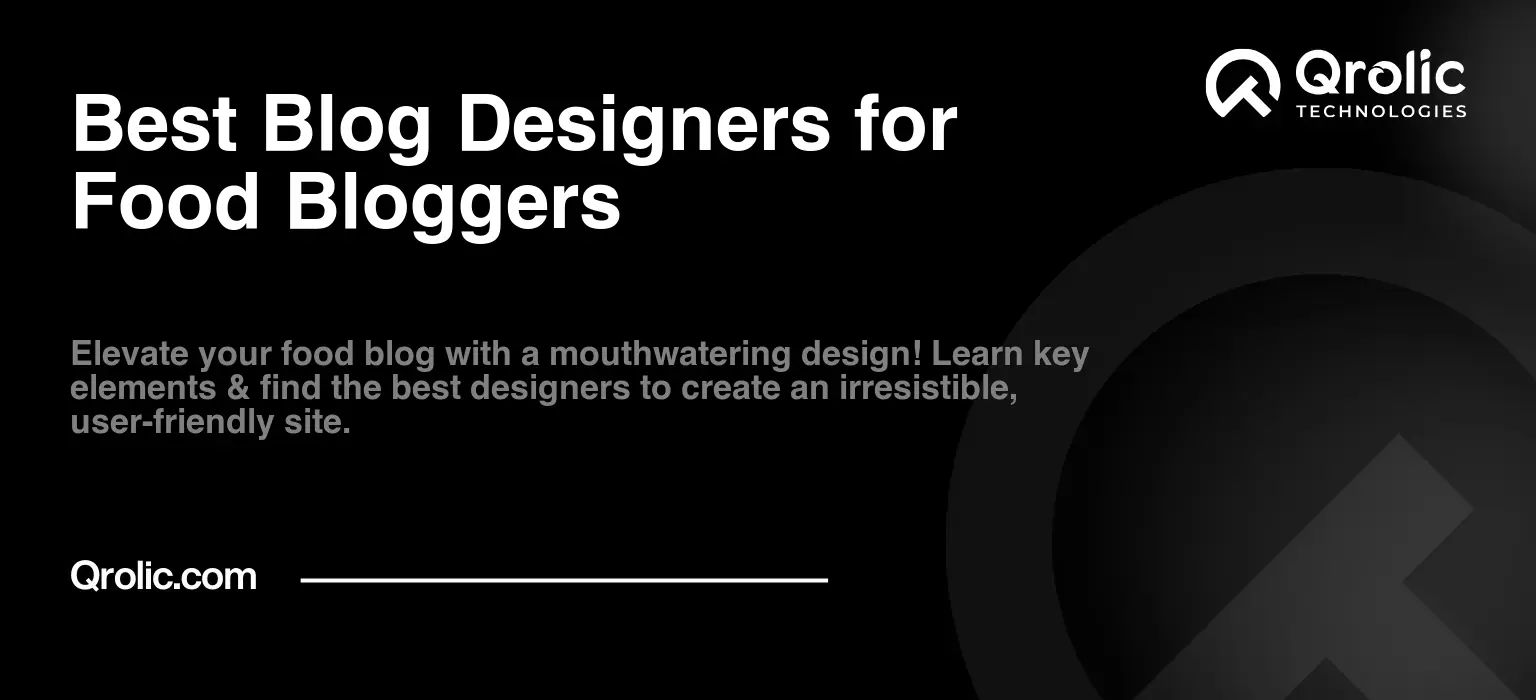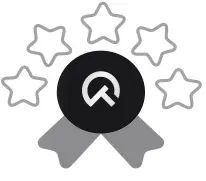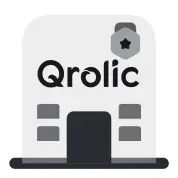Quick Summary:
- Great food blog design attracts readers and builds your brand.
- Focus on stunning photos, clear navigation, and mobile use.
- Choose custom designers, specialized themes, or DIY builders.
- Prioritize site speed, SEO, and avoid a cluttered look.
Table of Contents
- The Secret Ingredient to a Mouthwatering Food Blog: Design
- Why Does Design Matter for Food Blogs?
- What Makes a Good Food Blog Design? Key Elements
- How to Find the Right Blog Designer
- Top Blog Designers for Food Bloggers: Who Are They?
- Case Study: How Design Transformed a Food Blog
- Common Mistakes to Avoid
- Qrolic Technologies: Your Partner in Digital Growth
- Final Thoughts: Savoring Success with Excellent Design
The Secret Ingredient to a Mouthwatering Food Blog: Design
Every food blogger knows that delicious recipes are only half the battle. The other half? A blog design that’s as irresistible as your signature chocolate cake. A visually appealing, user-friendly blog is crucial for converting casual browsers into loyal readers, and ultimately, recipe-loving fans. You might be churning out culinary masterpieces, but if your blog looks like a kitchen nightmare, you’re missing out on a huge slice of potential success. This article is a comprehensive guide to finding the perfect blog designer to elevate your food blog from good to gourmet. We’ll delve into the “why,” “what,” “how,” and “who” of food blog design, ensuring you have all the tools to make your blog a feast for the eyes.
Why Does Design Matter for Food Blogs?
Let’s be honest: we eat with our eyes first. This is especially true online. A food blog design isn’t just about making things pretty; it’s about creating an experience. Here’s why impeccable design is non-negotiable for food bloggers:
-
First Impressions Matter: Your blog’s appearance is the first thing a visitor sees. In seconds, they’ll decide whether to stay and explore or click away. A professional, attractive design signals credibility and expertise. Think of it as the carefully arranged appetizer platter that invites you to the full course.
-
Engagement and Retention: A well-designed blog is easy to navigate. Clear menus, organized recipe categories, and fast-loading pages keep readers engaged and encourage them to explore more of your content. A confusing or clunky site is like a messy kitchen – no one wants to stick around.
-
Brand Identity: Your blog’s design is an extension of your personal brand. It should reflect your cooking style, personality, and values. Is your blog vibrant and playful, or classic and sophisticated? Your design should communicate this instantly. Consistent use of colors, fonts, and imagery reinforces your brand identity and makes your blog memorable.
-
Improved User Experience (UX): A great user experience goes hand-in-hand with great design. A responsive design that looks good on any device is crucial. Readers should be able to find what they need effortlessly, from searching for specific recipes to leaving comments or sharing your content. Poor UX translates to lost readers.
-
Increased Traffic & Conversion: A well-designed blog is more likely to be shared on social media, driving more traffic to your site. Furthermore, a design optimized for conversion encourages readers to subscribe to your newsletter, buy your cookbook, or engage with your affiliate links, ultimately increasing your earning potential.
-
SEO Enhancement: Search engines prioritize sites with good user experience and design. Well-structured HTML, fast loading times, and mobile responsiveness (all design elements) are essential for higher rankings.
What Makes a Good Food Blog Design? Key Elements
Before you start looking for a designer, understand the key design elements that make a food blog successful. Here are the critical components:
-
Visually Appealing Layout: The layout is the backbone of your blog. It should be clean, uncluttered, and easy to scan. Avoid overwhelming readers with too much text or distracting elements. Prioritize a clear hierarchy with prominent headlines and subheadings.
-
High-Quality Photography: Food photography is paramount. Your photos are your strongest selling point. They must be well-lit, in focus, and showcase your recipes in the most appetizing way possible. Work with a photographer or invest time in learning food photography techniques.
-
Clear and Readable Typography: Choose fonts that are easy to read both on screen and on mobile. Avoid overly decorative or script fonts that can be difficult to decipher. Use a limited number of font styles (usually no more than two or three) to maintain a consistent look.
-
Mobile Responsiveness: A significant portion of your audience will be viewing your blog on smartphones and tablets. Your blog must be responsive, meaning it automatically adjusts to fit different screen sizes. A poor mobile experience will deter users.
-
Intuitive Navigation: Your blog should be easy to navigate. Readers should be able to easily find what they are looking for. Utilize clear menus, prominent search bars, and logical category classifications. Consider a recipe index to allow readers to browse all recipes quickly.
-
Fast Loading Speed: slow-loading pages frustrate users and can negatively impact your search engine ranking. Optimize your images, use a reliable hosting provider, and employ caching techniques to ensure fast loading speeds.
-
Branding Consistency: Maintain consistency in your use of colors, fonts, imagery, and overall style. This builds brand recognition and creates a cohesive visual identity for your blog. Your logo should be featured prominently and should reflect your brand’s personality.
-
Call to Action (CTA) Elements: Include clear calls to action, such as newsletter signup forms, links to social media accounts, or buttons to buy your products. These elements guide visitors and encourage engagement.
-
Whitespace: Don’t underestimate the power of whitespace. It creates breathing room around your content, making it easier to read and less overwhelming.
-
SEO Optimization: A well-designed blog is optimized for search engines with proper tags, headings, and keyword usage, making it easier for your blog to be discovered through search results.
How to Find the Right Blog Designer
Finding the right blog designer is like finding the perfect spice blend – it takes some careful consideration. Here’s a step-by-step guide to help you navigate the process:
-
Define Your Needs and Budget: Before you start your search, have a clear understanding of your specific needs and budget. Do you need a completely custom design, or will a pre-made theme suffice? What features are essential for your blog (e.g., recipe card plugins, e-commerce integration, membership features)? How much are you willing to invest?
Explore Design Options:
- Custom Website Design: This is the most expensive option but offers the most flexibility and personalization. You’ll work closely with a designer to create a unique blog that perfectly fits your brand.
- Theme Customization: You purchase a pre-designed theme and customize it to your needs. This is a more cost-effective option than custom design but offers less flexibility. Many themes are specifically designed for food blogs.
- DIY (Do-It-Yourself): If you have technical skills, you can design your blog yourself using wordpress and a page builder. This is the most budget-friendly option but requires a significant time commitment and technical proficiency.
Where to Find Designers:
- Freelance Platforms: Websites like Upwork, Fiverr, and Freelancer connect you with freelance designers. Read reviews and check portfolios carefully.
- Design Agencies: Design agencies specialize in web design and development. They typically offer a higher level of service and expertise but come at a higher price point.
- Word-of-Mouth Referrals: Ask fellow food bloggers for referrals. They can offer valuable insights based on their experiences.
- Theme Marketplaces: Theme marketplaces like ThemeForest and Creative Market offer thousands of pre-designed themes, some of which are specifically tailored for food blogs.
-
Check Portfolios: Always review a designer’s portfolio before making a decision. Look for designs that are visually appealing, user-friendly, and aligned with your aesthetic. Pay attention to the quality of the photography, typography, and overall layout. Ensure they have experience with food blog design specifically.
-
Request a Quote and Timeline: Once you’ve identified a potential designer, request a detailed quote and timeline for your project. Ensure the quote includes all aspects of the design, from initial concepts to final implementation.
-
Communicate Clearly: Effective communication is key to a successful design project. Be clear about your goals, preferences, and feedback. Respond to the designer promptly and ask questions when necessary.
-
Consider SEO and Performance: Inquire about SEO best practices. Your designer should be familiar with coding practices that promote search engine visibility. Ask about page speed optimization as well, ensuring your blog loads quickly.
-
Ask About Ongoing Support: Find out if the designer offers ongoing support after the project is complete. Will they help you troubleshoot issues or make updates as needed?
-
Sign a Contract: Make sure you have a contract that outlines the work to be done, the timeline, payment terms, and what happens if the project deviates from the original plan.
Top Blog Designers for Food Bloggers: Who Are They?
While it is impossible to list all of them, here are some categories and types of designers you should explore with some notable options within them:
-
Custom Design Agencies: If you are willing to pay for a fully tailored experience, search for agencies that specialize in WordPress design and development. Ensure they have portfolios featuring food blogs.
-
Freelance Designers with Food Blog Specialization: Explore Upwork and Fiverr to find freelancers. Look for food blog specific portfolios. Ensure they have worked on multiple food blogs to understand the best practices.
WordPress Theme Developers: Several theme developers are focused on creating stunning food blog templates. Some popular options are:
- Foodie Pro Theme: This is a popular StudioPress Genesis child theme and one of the most popular food blogging themes, renowned for its design and SEO-friendliness.
- Cook’d Pro Theme: Another popular StudioPress theme that’s user-friendly and is designed for food bloggers.
- Astra Theme: A very versatile theme, often cited as a favorite by many food bloggers because of the many options it gives.
- Kadence Theme: It is a popular Gutenberg theme known for speed and flexibility. Many consider it a good option for those with coding capabilities.
- Divi Theme: This is a powerful page builder and theme, offering complete visual control over the design.
DIY-Friendly Page Builders If you like DIY and want complete control over your website design, you can use these:
- Elementor: A popular WordPress plugin known for ease of use and flexibility, ideal for creating a custom blog without coding.
- Beaver Builder: A drag-and-drop page builder that offers user-friendly options for design customizations.
- Divi Builder: The page builder from Elegant Themes is an alternative to Elementor.
Case Study: How Design Transformed a Food Blog
Let’s examine a hypothetical example. Suppose you have a food blogger named “Sarah” who started with a very simple, free blog theme. Sarah had fantastic recipes, but her blog felt cluttered and unorganized. The mobile experience was poor, and her readers found it hard to navigate.
Sarah decided to invest in a professional blog design using a customized version of the Foodie Pro theme. Here’s how her blog transformed:
- Improved Visual Appeal: Sarah chose a clean, modern layout with high-quality food photography prominently displayed.
- Enhanced Navigation: Clear menus and recipe categories made it easier for readers to find what they were looking for. A well organized recipe index made all of Sarah’s content available to her readers quickly.
- Mobile Responsiveness: The blog looked flawless on all devices, leading to increased engagement from mobile users.
- Stronger Brand Identity: Sarah chose a color palette and font scheme that reflected her cooking style.
- Increased Traffic and Engagement: Her website saw a noticeable increase in traffic and social media shares, as well as newsletter subscriptions.
- Improved Search Ranking: With a faster loading site, the site began to rank higher in search results, leading to even more traffic.
Sarah’s case study illustrates the significant impact of a well-designed food blog. It’s an investment that pays dividends in the form of increased engagement, brand recognition, and financial growth.
Common Mistakes to Avoid
Before you start your design journey, be aware of common mistakes that food bloggers often make:
- Ignoring Mobile Optimization: Neglecting mobile users is a grave error. Always prioritize a responsive design.
- Overusing Plugins: Too many plugins can slow down your site. Choose plugins wisely and uninstall any that you don’t need.
- Poor Quality Images: Low-quality, poorly lit, or blurry photos are a major turn-off.
- Neglecting User Experience: Make sure your blog is user-friendly. Don’t make readers work too hard to find what they need.
- Not Focusing on SEO: Ensure your site is optimized for search engines. Use relevant keywords, optimize your images, and structure your content appropriately.
- Cluttered Design: Keep it simple. Don’t overload your pages with too many elements.
- Inconsistent Branding: Maintain a consistent visual identity across your blog.
- Slow Loading Speed: A slow website is a sure way to lose visitors. Optimize everything to ensure your site loads quickly.
Qrolic Technologies: Your Partner in Digital Growth
While having a stunning blog is essential, your online presence goes beyond just website design. At Qrolic Technologies, we understand that true success requires a holistic approach. We offer a comprehensive suite of services to elevate your food blogging journey:
- Web Development & Design: Beyond just the blog design, we create custom solutions that work for your unique needs. We can help with custom plugin development, integrations with other services, and provide ongoing support.
- Digital Marketing: We’ll help you get your content seen by the right people. Our digital marketing strategies include SEO optimization, social media marketing, and paid advertising to drive traffic to your blog.
- Social Media Management: We know how crucial social media is to growing your online presence. We can handle everything, from strategy development to creating and posting engaging content, helping you connect with your audience where they spend their time online.
- Branding and Identity: Your logo and overall brand should match your mission and value. We provide a wide range of branding services, from logo and design elements to ensuring a cohesive and engaging brand that stands out.
- Content Creation: We create optimized content that readers and search engines alike will appreciate. From blog posts to website copy, we will help you create engaging text that improves SEO and resonates with your audience.
- Mobile Apps: Looking to take your brand to the next level? We can develop mobile apps to give your audience a new way to interact with your brand.
- AI and Automation: We work with the latest technology to provide you with the best solutions. We can provide automation that will ease your burden of doing repetitive tasks, and even implement AI-based solutions to enhance the reach and capabilities of your blog.
With Qrolic Technologies, you gain a partner that understands the ins and outs of the online world. We’re not just designers and developers; we are also problem-solvers and collaborators. We listen to your needs, provide customized solutions, and work tirelessly to help you achieve your goals. Whether you are just starting or want to take your blog to the next level, we’re here to guide you at every step of the way.
Visit our website at https://qrolic.com/ to learn more about how we can help you take your food blog to new heights.
Final Thoughts: Savoring Success with Excellent Design
The design of your food blog is not just an afterthought; it’s a key ingredient for your success. A beautiful, functional, user-friendly, and SEO-optimized blog is what turns casual visitors into loyal fans. By investing in the right designer and focusing on the critical elements of blog design, you’ll be one step closer to culinary blogging stardom. So go ahead, design a blog that’s as irresistible as the recipes you’re creating, and watch your readership grow and thrive. The world is hungry for your amazing food content and great blog experience. It’s time to serve it up!






